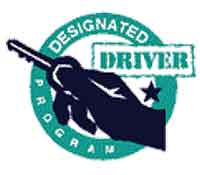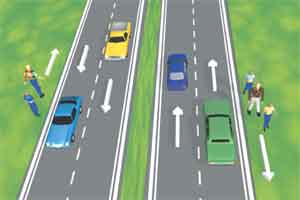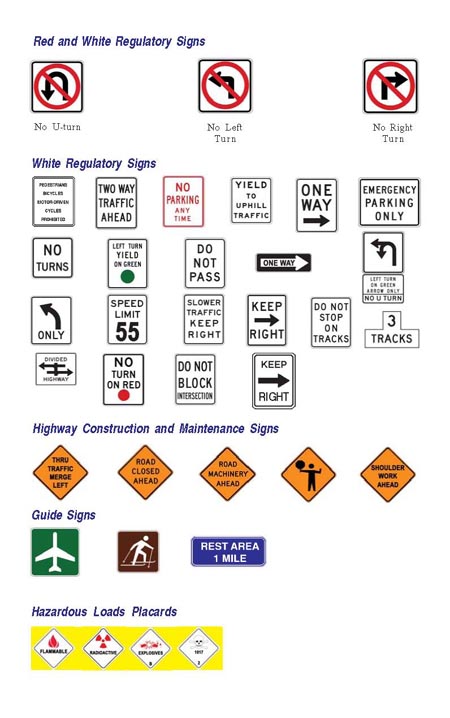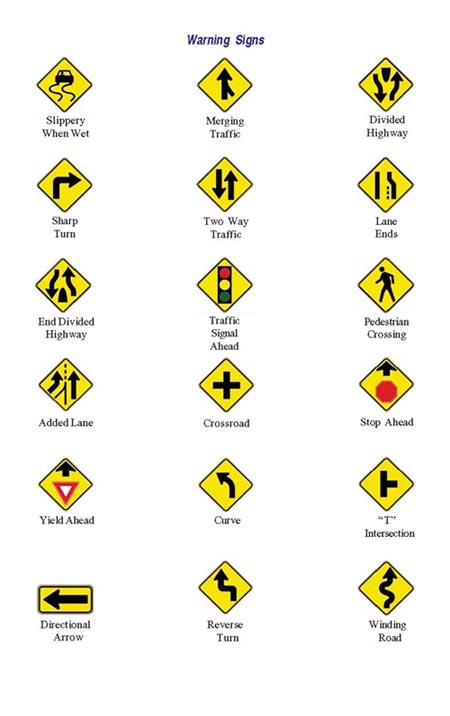Generally, older drivers, especially over the age of 70, have more crashes per mile than any other group except teenagers and young adults. Also, it is more difficult for older drivers to recover from injuries suffered in a crash. If you are concerned about an aging driver, see "Referring An Unsafe Driver."
Health Problems Affecting Aging Drivers
Health problems in older adults cause slower reaction time, reduced vision and hearing, impaired body movement, and slower decision making. Health conditions such as glaucoma, arthritis, stroke, Alzheimer’s disease, etc., should be considered when making decisions about driving. In cases where a person’s driving must be restricted, DMV may issue a conditional license rather than revoking the person’s driving privilege.
Tips For Safer Driving
Be aware of the changes in your driving ability and that of your aging family members or friends. Here are some things you can do:
- Don’t drive at night, at dusk, or in bad weather conditions.
- Use a seat cushion or talk to your vehicle dealer about extensions for brake and accelerator pedals or other vehicle modifications.
- Make sure your windshield and headlights are clean to help reduce glare.
- Make sure your eyeglasses have an up-to-date prescription.
- Talk to your physician for recommendations to help you drive safely.
- Take a Mature Driver Program training class. For a list of approved programs, go online at www.dmv.ca.gov.
- Attend a driver assessment or rehabilitation program.
- Never drink alcohol and drive because your body can be more sensitive to the effects of alcohol, especially when combined with medications.
- Consider using alternative means of transportation. Call your local Area Agency on Aging for a list of transportation providers in your area.
Referring An Unsafe Driver
If you are concerned that a family member, friend, or other person can no longer drive safely, write to the address below. You may also use the Request for Driver Reexamination (DS 699) located on DMV’s website. Provide the person’s name, birth date, driver license number and current address, and explain what you observed that led you to believe the person is an unsafe driver. The letter must be signed. Mail your letter to:
DMV
Driver Safety Actions Unit
M/S J234
P.O. Box 942890
Sacramento, CA 94290-0001
DMV will contact the person for a reexamination. A driving test will be given to the person when the:
- Physician reports the person has lapses of consciousness.
- Traffic officer requests a DMV review and the officer believes the driver is incapable of
operating a vehicle safely. - Family member makes a good-faith report to DMV stating the driver cannot safely operate a vehicle.
Vision
You need good vision to drive safely. If you cannot see clearly, you cannot judge distances or spot trouble, so you won’t be able to do something about it. You also need to see peripherally or “out of the corner of your eye” to spot cars coming up beside you while your eyes are on the road ahead.
You may see clearly and still not be able to judge distances. You need good distance judgment so you know how far you are from other cars. Many people who may see clearly in the daytime have trouble at night. Some see poorly in dim light. Others may have trouble with the glare of headlights.
Have your eyes checked every year or two. You may never know about poor peripheral vision or poor distance judgment unless you have your eyes checked.
Hearing
Hearing is more important to driving than many people realize. The sound of horns, a siren, or screeching tires can warn you of danger. Sometimes you can hear a car but you cannot see it, especially if it is in your blind spots.
Even people with good hearing cannot hear well if the radio, CD, or tape deck is blaring. While driving, do not wear a headset or earplugs in both ears.
Hearing problems, like bad eyesight, can come on so slowly that you do not notice them. Drivers who know they are deaf or hearing-impaired can adjust. They can learn to rely more on their seeing habits.
Alertness
When you are tired, you are less alert. The body naturally wants to sleep at night and most drivers are less alert at night, especially after midnight. You may not see hazards as soon or react as quickly, so your chances of having a crash are greater. If you are sleepy, the only safe cure is to get off the road and get some sleep.
To keep from getting tired on a long trip:
- Get at least a normal night’s sleep before you start.
- Don’t take any drugs that can make you drowsy.
- Don’t drive long hours and try not to drive late at night.
- Take regular rest stops, even if you are not tired.
- Keep shifting your eyes from one part of the road to another. Look at objects near and far, left and right.
- Try chewing gum or singing along with the radio.
- Roll your window down and get some fresh air.
If you are tired all the time and fall asleep often during the day, ask your physician to check for a sleep disorder.
Medications
Remember that all medications, prescription and over-the counter, are potentially dangerous. Over-the-counter medicines that you take for colds and allergies can make you drowsy and affect your driving ability. If you must take medication before driving, find out the effects of the medication from your physician or pharmacist. It is your responsibility to know the effects of the medications you take.
Before you decide to drive, do not:
- Mix medications unless directed by your physician.
- Take medications prescribed for someone else.
- Mix alcohol with your medications. This applies to both prescribed and over-the-counter medications.
Health And Emotions
Your personality affects the way you drive. Don’t let your emotions interfere with safe driving. Use all of your good judgment, common sense, and courtesy when you drive and follow all the recommended safe driving rules.
Discuss poor vision, heart problems, diabetes, or epilepsy with your physician and follow his or her advice. Tell DMV if you have a condition that might affect your ability to drive safely.
Conditions Physicians Must Report
Physicians and surgeons are required to report patients at least 14 years of age and older who are diagnosed as having lapses of consciousness, dementia (mental disorders) conditions, or related disorders. (Health & Safety Code Section 103900.
Although not required by law, your physician may report any other medical condition he/she believes may affect your ability to drive safely.
alifornia Driver Handbook
Designated Driver Program
 The Designated Driver Program is an anti-DUI effort that works. The program encourages one individual to abstain from consuming alcoholic beverages for an outing so that he or she can be responsible for transporting the other members of the group safely.
The Designated Driver Program is an anti-DUI effort that works. The program encourages one individual to abstain from consuming alcoholic beverages for an outing so that he or she can be responsible for transporting the other members of the group safely.
To participate as a designated driver, an individual:
- Should be at least 21 years of age and must possess a valid driver license.
- Must be part of a group of two or more persons and verbally identify himself or herself as the designated driver to the server.
- Must abstain from consuming alcoholic beverages for the duration of the outing.
- Must not be an otherwise impaired driver.
- Must understand that management reserves the right to refuse service to anyone at anytime.
Diplomatic Driver License
Nonresidents who possess a valid diplomatic driver license issued by the U.S. Department of State are exempt from California’s driver licensing requirement.
Driving Schools
When learning to drive, you should seek qualified instruction either in bona fide public or private high schools or in state licensed professional driving schools.
Professional schools and instructors in California are licensed by the DMV after meeting rigid qualifying standards. Schools must carry liability insurance, be bonded, and maintain complete records for DMV inspection. Vehicles are subject to annual inspection. Instructors must pass a qualifying written examination every three years, or show proof of continuing education in the traffic safety field. If you use the services of a professional driving school, ask to see the instructor’s identification card.
Free ID Cards For P&M Conditions
Drivers who are no longer able to drive safely because of a physical or mental (P&M) condition may exchange their valid driver license for an ID card for no fee, if certain guidelines are met. Call 1-800-777-0133 for additional information.
Identification (ID) Card
DMV issues ID cards to persons of any age. To obtain an original ID card, you must present a birth date/legal presence verification document (more info) and provide your social security number. The ID card is good until the sixth birthday after it is issued. The fee for an ID may be reduced if you meet certain income requirements for specific public assistance programs.
Note: Governmental or nonprofit organizations determine whether an individual meets the requirements for a reduced -fee ID.
If you are age 62 or over, you may obtain a free Senior Citizen ID card good for 10 years.
California Driver Handbook
Miscellaneous
Mature Driver Program
The Mature Driver Program is an eight-hour course for drivers aged 55 and older. The course covers a variety of topics of special interest to the mature driver and is available from course providers approved by DMV.
Your insurance company may offer discounts for those who complete the class and receive a completion certificate . The certificate is valid for three years and can be renewed by completing a four-hour course.
Pedestrian Responsibilities*
Yield the right-of-way to vehicles when you:
- Cross or walk where intersections or crosswalks are not marked.
- "Jaywalk" across a street between intersections, where no pedestrian crosswalks are provided.
Remember: Making eye contact with the driver does not mean that the driver will see you or yield the right-of-way.
Do not suddenly leave a curb or other safe place and walk or run into the path of a vehicle close enough to be a danger to you. This is true even though you are in a crosswalk. The law states that drivers must take care for the safety of any pedestrian— but if the driver can’t stop in time to avoid hitting you, the law won’t help you.
Always obey traffic signals. Whether the intersection has pedestrian signals or the usual traffic lights, you must obey the pedestrian rules. (More information about pedestrians) At an intersection where traffic is not controlled by signals, drivers are required to yield the right-of-way to you within any crosswalk, marked or unmarked.
When a signal first changes to green or "WALK" for you, look left, right, and then left again, and yield the right of way to any vehicle in the intersection before the signal changed.
If the signal begins blinking or changes to "DON’T WALK," or to an upraised hand after you have gone part way across a divided street, you may continue across the street.
Do not stop or delay traffic unnecessarily while crossing a street.
Pedestrians are not permitted on any toll bridge or highway crossing unless there is a sidewalk and signs stating pedestrian traffic is permitted.
If there is no sidewalk, walk facing the oncoming traffic (see the picture below). Don’t walk or jog on any freeway where signs tell you that pedestrians are not allowed.

At night, make yourself more visible by wearing white clothing and retro-reflective materials, or carrying a flashlight.
*Joggers must obey pedestrian rules.
Record Confidentiality
Most information in your driver license file is available to the public. Your residence address may only be viewed by authorized agencies. Your mailing address, if different from your residence, is less restricted.
Records on the physical or mental condition of a driver, however, remain confidential.
You may obtain a copy of your driving record at any DMV office for a fee and by providing valid identification.
Vehicle Theft Prevention Tips
If you follow the suggestions below, you can minimize your chances of becoming the victim of vehicle theft. In the United States, a vehicle is stolen an average of every 21 minutes. Vehicle theft costs the victim time and money and it costs society by increasing insurance premiums. Also, vehicle thieves often use the stolen vehicles to commit other crimes.
Vehicle thefts seem to occur more often where large groups of cars are parked for extended periods of time, such as shopping centers, colleges, sporting events, movie complexes, and large apartment complexes. Vehicle thefts can occur anytime—at random, on different days of the week and various times of the day.
Here are some tips you can use to avoid being the victim of vehicle theft:
- Never leave:
- your vehicle running and unattended, even to dash into a store.
- the keys in the ignition or in the vehicle. Don’t leave them inside a locked garage or in hide-a-key boxes.
- valuables in plain view, even if your vehicle is locked. Place them out of sight.
- personal identification documents such as the ownership title or credit cards in the vehicle.
- Always:
- roll up your windows and lock your vehicle, even if it’s parked in front of your house.
- park in high-traffic, well lighted areas, whenever possible.
- report a stolen vehicle immediately to the police.
- Suggestions:
- Install a mechanical device that locks the steering wheel, column, or brakes.
- Investigate the purchase of a vehicle theft tracking/security system, especially if you own one of the frequently-stolen model vehicles.
- When you must leave your key with a valet, attendant, or mechanic, only leave the ignition key.
- Copy your license plate and vehicle information on a card and keep that information with you. The police will need this information, if your vehicle is stolen.
Traffic Breaks
Traffic breaks are used by law enforcement for several reasons:
- to slow or stop traffic to remove hazards from the roadway.
- conducting emergency operations.
- prevent traffic accidents in heavy fog or unusually heavy traffic.
During a traffic break, the officer turns on the rear emergency lights, slows the vehicle and drives across the lanes of traffic in a serpentine manner. To assist the officer in conducting a traffic break, follow these rules:
- activate your emergency flashers to warn other drivers there is a hazard ahead.
- slowly begin to decrease your speed. Do not slow abruptly unless it is necessary to avoid a collision. Slow to the same speed while keeping a safe distance from the patrol car ahead of you.
- do not attempt to drive past the patrol vehicle. Do not accelerate until the patrol vehicle has turned off its emergency lights and traffic conditions ahead allow the return of normal speeds.
California Driver Handbook
Signs


source: http://www.dmv.ca.gov/pubs/hdbk/signs.htm

No comments:
Post a Comment